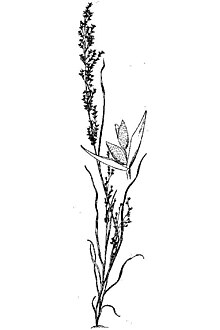Dissanthelium californicum
| Dissanthelium californicum | |
|---|---|

| |
| Scientific classification | |
| Kingdom: | Plantae |
| Clade: | Tracheophytes |
| Clade: | Angiosperms |
| Clade: | Monocots |
| Clade: | Commelinids |
| Order: | Poales |
| Family: | Poaceae |
| Genus: | Dissanthelium |
| Species: | D. californicum
|
| Binomial name | |
| Dissanthelium californicum | |
| Synonyms | |
| |
Dissanthelium californicum (California dissanthelium, Catalina grass) is a rare species of grass in the family Poaceae. It was originally discovered on Santa Catalina, an island off California's coast in 1847 by U.S. botanist and naturalist William Gambel. It was later identified as growing on Guadalupe Island (off Baja California Peninsula), on San Clemente Island and Catalina Island (both off southern California).
Last seen in 1912, Dissanthelium californicum was generally thought to be extinct, until examples were found on March 29, 2005, by Jenny McCune of the Catalina Island Conservancy on Catalina Island.[1] In 2010, two populations were found on San Clemente Island. It has not reappeared on Guadalupe Island.
See also[edit]
References[edit]
- ^ Catalina Island Conservancy Times, Fall 2005
External links[edit]
- Calflora Database: Dissanthelium californicum (California dissanthelium, Catalina grass)
- Jepson Manual eFlora (TJM2) treatment of Dissanthelium californicum
- USDA Plants Profile for Dissanthelium californicum (Catalina grass)
- Grass Manual Treatment: Dissanthelium californicum
- Catalina Island Conservancy
- Batnet.com; Dissanthelium californicum Archived 2012-04-02 at the Wayback Machine
Categories:
- NatureServe imperiled species
- Pooideae
- Native grasses of California
- Grasses of Mexico
- Flora of California
- Flora of Baja California
- Flora of Mexican Pacific Islands
- Natural history of the Channel Islands of California
- Natural history of the California chaparral and woodlands
- Santa Catalina Island (California)
- Endangered biota of Mexico
- Plants described in 1848
- Pooideae stubs

